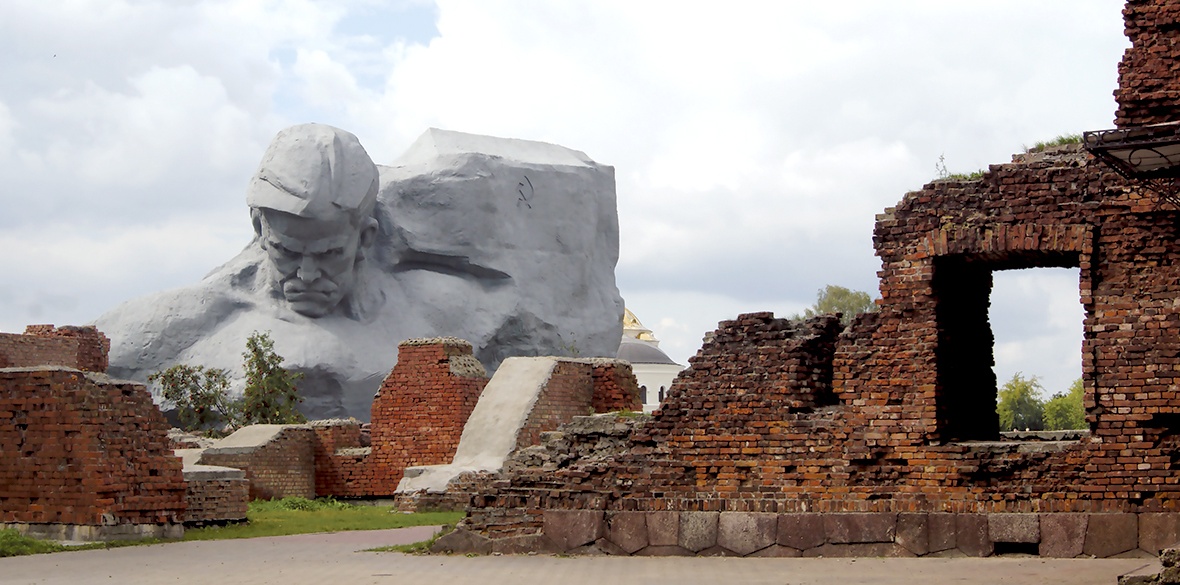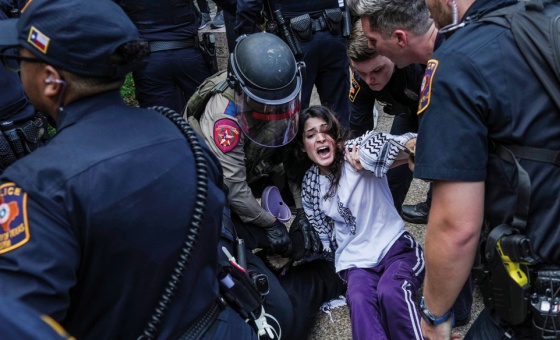This is the last article you can read this month
You can read more article this month
You can read more articles this month
Sorry your limit is up for this month
Reset on:
Please help support the Morning Star by subscribing here
Brest Fortress Memorial, Belarus
ON SEPTEMBER 18, 1971, just over 30 years after the momentous if doomed defence of the Brest fortress by the Soviet Red Army against Nazi invaders, a memorial to its defenders was unveiled by the 19th-century star-shaped citadel that sits astride the Mukhavets River and faces the River Bug.
On the present boundary between Belarus and Poland, within the latter’s borders before WWII it served as one of its places of internment for socialist activists.
Two weeks after Nazi Germany’s treacherous attack on Poland on September 1, 1939, Joseph Stalin ordered the Red Army to advance west and secure territories up to the River Bug, including the Brest fortress. Permitted under the Ribbentrop-Molotov pact of August 1939, it was a move designed to keep German armies at arm’s length.
But Hitler double-crossed Stalin and by unleashing operation Barbarossa, he wrong-footed the Red Army. Yet the Brest fortress’s heroic, if chaotic, defence became the Nazis’ first proper bloody nose of WWII.
The Brest Fortress memorial project was entrusted to sculptor Aleksandr Pavlovich Kibalnikov, born into a peasant family in 1912 in the Volgograd region. Kibalnikov’s talent was spotted and aided by renowned sculptor and painter Vera Mukhina and he went on to produce the magnificent monument to Vladimir Mayakovsky which graces Triumfalnaya Square in Moscow and the equally terrific statue of the young revolutionary and man of letters Nikolai Chernyshevsky in his native Saratov.
Kibalnikov integrated the ruins of the old fortress, adding two monumental sculptural compositions around the central Square of Ceremonies, where a 100 metre-tall titanium-coated obelisk in the shape of a bayonet evokes courage and tenacious resistance. Access to the area leads through a gigantic gate in the shape of a split star.
During the Brest siege, a Nazi commander wrote to the Wehrmacht high command: “There was only one solution — to force the Soviets to capitulate through hunger and thirst... our offers to give themselves up were unsuccessful.”
So it is perhaps particularly telling that the one of the two main figures of the memorial is called Thirst. It depicts a wounded Red Army soldier reaching out to gather water into his helmet from the Mukhavets River while leaning on his submachine gun.
The main monument, Courage, is a massive concrete head — 31.5m tall and 50m wide — of a soldier encapsulating resolve, grit and determination amid mortal combat. Intriguingly, it is conceptually somewhat reminiscent of Abraham Lincoln as carved out of Mount Rushmore.
At the centre of the architectural complex, in front of the Courage sculpture, three tiers of granite gravestones rise up and an eternal flame burns in front of the ruins in a cavity coated with black labradorite, with lighting revealing the solemn shapes after dusk.
The coarse, realist execution of the concrete sculptures serves as a direct emotional nexus between past and present, where immortalising an instance of selfless sacrifice and heroism extols a unifying patriotism in the face of continued external enmity, hostility and aggression.










